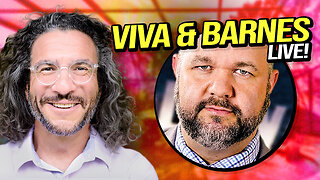What is the Difference Between Transistor and Diode? || History of Diode || Type of Diode
Both diodes and transistors are types of semiconductor devices that find a wide range of applications in different electronic circuits such as clippers, clampers, oscillators, rectifiers and amplifiers, etc. However, they have different functions and operate differently.
Go through this article to get an overview of how diodes and transistors function and how they are different from each other.
A diode has only one PN-junction and two terminals viz. anode (positive terminal of the diode) and cathode (negative terminal). There are two modes of operation of diode, i.e. forward bias and reverse bias.
Forward biasing of diode means the anode is connected to positive terminal of battery and cathode to the negative terminal battery and in the forward-biased mode, the diode acts as a closed switch.
While in the reverse biased mode, the anode is connected to the negative terminal and the cathode is connected to the positive terminal of the source. In the reverse bias mode, the diode works an open switch.
Therefore, a diode is a unidirectional semiconductor switch that allows current only in the forward direction and blocks in the current in the reverse direction. Thus, it is widely used in rectification, i.e., for the conversion of AC into DC.
The history of the diode can be traced back to the discovery of the "Edison effect" in the late 19th century. This led to the development of vacuum tube diodes in the early 20th century. Later, in the 1940s, semiconductor diodes were developed using materials such as germanium and silicon.
There are several types of diodes, including:
Zener diode: A type of diode that is designed to operate in the reverse breakdown region, allowing current to flow in the reverse direction when a certain voltage threshold is reached. This property is used in voltage regulation circuits.
Schottky diode: A type of diode that has a low forward voltage drop and a fast switching speed. It is commonly used in high-frequency circuits and power supplies.
Light-emitting diode (LED): A type of diode that emits light when current flows through it. LEDs are commonly used in lighting and display applications.
Photodiode: A type of diode that is designed to detect light. It converts light energy into an electrical signal.
On the other hand, a transistor is a three-terminal semiconductor device that can be used as an amplifier, switch, or oscillator. It consists of three layers of semiconductor material: the emitter, base, and collector. The base terminal controls the flow of current between the emitter and collector, allowing it to amplify or switch electronic signals.
In summary, diodes and transistors are both important semiconductor devices used in electronics, but they have different functions and operate differently. Diodes allow current to flow in one direction and are used in rectification and voltage regulation circuits, while transistors can be used as amplifiers, switches, and oscillators.
-
 2:27:28
2:27:28
Roseanne Barr
2 days ago $77.28 earnedThe Roseanne & Jamie Kennedy Experiment | The Roseanne Barr Podcast #51
146K204 -
 2:06:44
2:06:44
vivafrei
15 hours agoEp. 214: Trump Juror SCANDAL? Hunter Trial MADNESS! Covid Win? Alex Jones DOWN? & MORE Viva & Barnes
117K219 -
 LIVE
LIVE
Vigilant News Network
13 hours agoMedia Blackout: 10 News Stories They Chose Not to Tell You - Episode 26
3,707 watching -
 1:18:16
1:18:16
The Late Kick with Josh Pate
10 hours agoLate Kick Live Ep 520: SEC vs Texas | Unpopular CFB Opinions | PennSt Whiteout Issues | Bama Mood
53.7K3 -
 LIVE
LIVE
Right Side Broadcasting Network
6 days agoLIVE REPLAY: President Donald J. Trump Holds a Rally in Las Vegas, NV - 6/9/24
5,470 watching -
 16:09
16:09
Clownfish TV
13 hours agoMicrosoft DISABLES Windows Recall After MASSIVE Public Backlash!
35.6K52 -
 16:17
16:17
TENET Media
16 hours agoThe Shopping Cart Theory | Matt Christiansen
40.4K33 -
 17:55
17:55
JoBlo Originals
1 day agoWhat Happened to EPIC MEAL TIME?
44.7K5 -
 31:02
31:02
Degenerate Plays
15 hours agoBest Girl Needs Her Swimsuit - Final Fantasy 7: Ever Crisis : Part 2
45.8K5 -
 48:14
48:14
World Nomac
1 day agoMy First Time in Shanghai, China 🇨🇳
49.6K13